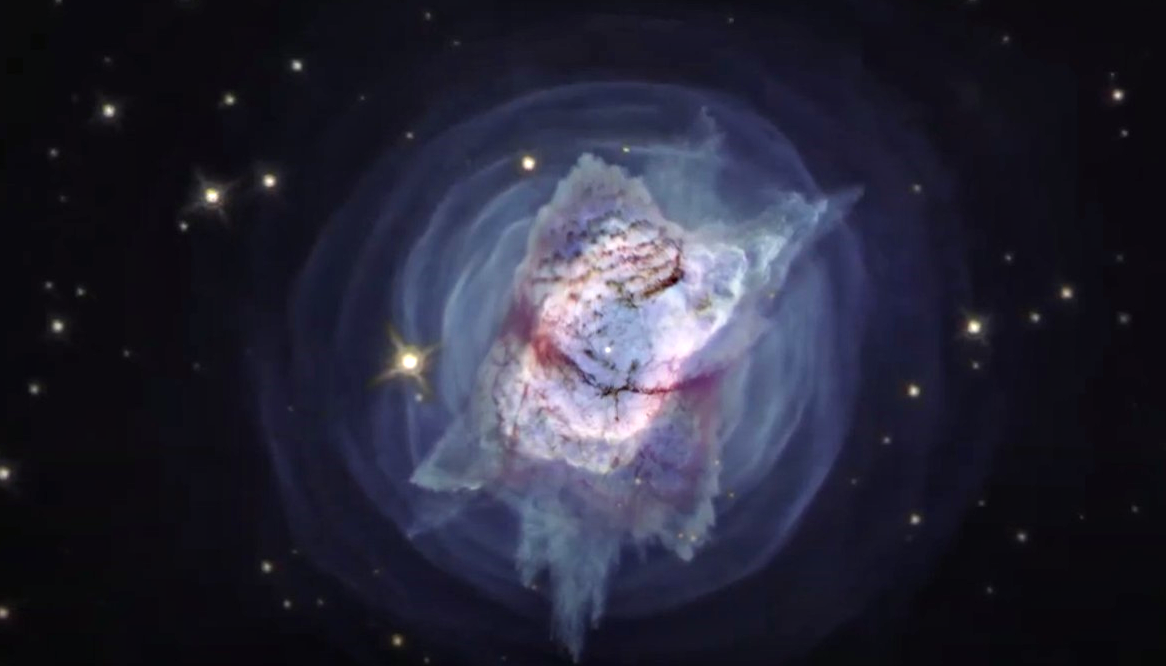
"Normally at these distances, entire galaxies look like small smudges, with the light from millions of stars blending together," said Welch. The discovery was made from data collected during Hubble's RELICS (Reionization Lensing Cluster Survey) program, led by co-author Dan Coe at the Space Telescope Science Institute (STScI), also in Baltimore. "We almost didn't believe it at first, it was so much farther than the previous most-distant, highest redshift star," said astronomer Brian Welch of the Johns Hopkins University in Baltimore, lead author of the paper describing the discovery, which is published in the March 30 journal Nature. The smallest objects previously seen at such a great distance are clusters of stars, embedded inside early galaxies. The newly detected star is so far away that its light has taken 12.9 billion years to reach Earth, appearing to us as it did when the universe was only 7 percent of its current age, at redshift 6.2.

That star existed when the universe was about 4 billion years old, or 30 percent of its current age, at a time that astronomers refer to as "redshift 1.5." Scientists use the word "redshift" because as the universe expands, light from distant objects is stretched or "shifted" to longer, redder wavelengths as it travels toward us. The find is a huge leap further back in time from the previous single-star record holder detected by Hubble in 2018. NASA's Hubble Space Telescope has established an extraordinary new benchmark: detecting the light of a star that existed within the first billion years after the universe's birth in the big bang-the farthest individual star ever seen to date. While the chances are slim that Earendel is one of the universe's first-generation stars, astronomers are eager for its insights into the environment of the early universe. NASA's James Webb Telescope will follow-up to learn about Earendel's brightness, temperature, and composition. Earendel was aligned on or very near a ripple in the fabric of space created by the cluster's mass, which magnified its light enough to be detected by Hubble. Hubble got a boost by looking through space warped by the mass of the huge galaxy cluster WHL0137-08, an effect called gravitational lensing. It's a significant leap beyond Hubble's previous distance record, in 2018, when it detected a star at around 4 billion years after the big bang. The star, nicknamed Earendel by astronomers, emitted its light within the universe's first billion years. Four Successful Women Behind the Hubble Space Telescope's AchievementsĮven NASA's powerful Hubble Space Telescope can benefit from some assistance, as evidenced in its latest discovery: a record-breaking star so distant that a combination of the telescope's sophisticated instrumentation and nature's natural magnifying glass was needed to spot it.Characterizing Planets Around Other Stars.Measuring the Universe's Expansion Rate.These observations were taken in infrared and visible light as part of a study of galaxy cores within the Virgo Cluster, and feature a portion of the galaxy near the centre. This image of Messier 98 was taken in 1995 with the Wide Field and Planetary Camera 2, an instrument that was installed on the NASA/ESA Hubble Space Telescope from 1993 till 2009. This abundance of star-forming material means that Messier 98 is producing stellar newborns at a high rate the galaxy shows the characteristic signs of stars springing to life throughout its bright centre and whirling arms.

#HUBBLE SPACE TELESCOPE IMAGES STARS 2000X2000 FULL#
Messier 98 is estimated to contain about a trillion of stars, and is full of cosmic dust - visible here as a web of red-brown stretching across the frame - and hydrogen gas.

It was discovered in 1781 by the French astronomer Pierre Méchain, a colleague of Charles Messier, and is one of the faintest objects in Messier’s astronomical catalogue. This Hubble Picture of the Week shows the spiral galaxy Messier 98, which is located about 45 million light-years away in the constellation of Coma Berenices (Berenice's Hair).


 0 kommentar(er)
0 kommentar(er)
